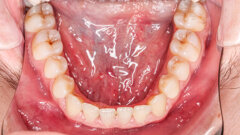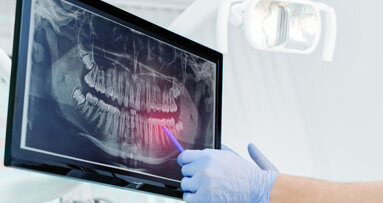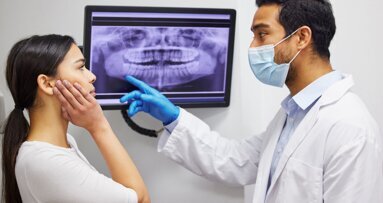YEREVAN, Armenia: While the digitisation of dentistry continues to progress steadily throughout regions with highly advanced capitalist economies, a book chapter published this month explores how this process is unfolding in other, less affluent, corners of the world. Written by Armenian maxillofacial surgeon Dr Hrach Mikayelyan, the chapter casts light upon the significant challenges faced by these countries in making these groundbreaking technologies accessible on a broad scale.
After detailing the various ways in which dentistry is being powerfully reshaped by recent technological developments, the chapter moves on to analysing the barriers faced by low- and middle-income countries (LMICs) in adopting digital technologies. One of the most significant of these is the limited access to advanced dental technologies such as digital imaging, CAD/CAM and 3D printing. These technologies, which are becoming standard in high-income countries, remain largely inaccessible owing to high costs and the lack of infrastructure in LMICs.
The expense of acquiring and maintaining these technologies makes it difficult for dental practices in LMICs to adopt them, contributing to a significant gap in the quality of care provided. The financial constraints faced by many LMICs make it challenging to invest in the necessary infrastructure for digital dentistry. This includes not only the equipment but also the software and digital platforms required for modern dental procedures. The high costs are compounded by the economic instability in many of these countries, where healthcare funding is often limited and dentistry is not always prioritised.
The chapter highlights the inadequacy of infrastructure in LMICs as a major barrier to the digitisation of dentistry. This includes unreliable electricity, poor internet connectivity and a lack of digital health records, which are essential for the effective use of digital technologies in dental practices. Without a solid infrastructure, even when digital tools are available, their use is severely limited.
Another significant challenge is the lack of education and training in digital dentistry among dental professionals in LMICs. Many dental schools in these regions do not have the resources or expertise to teach the latest digital techniques, leaving graduates unprepared to use these technologies in practice. The chapter stresses the need for comprehensive training programmes to equip dental professionals with the skills needed to utilise digital tools effectively.
Regulatory and policy issues also pose challenges to the adoption of digital dentistry in LMICs. The lack of clear guidelines and standards for digital health technologies can hinder their implementation. Additionally, the regulatory environment in many LMICs is often under-developed, making it difficult to integrate new technologies into existing healthcare systems.
The chapter underscores the disparities in healthcare access within LMICs, where rural and remote populations are particularly disadvantaged. The limited availability of digital technologies exacerbates these disparities, making it difficult to provide high-quality dental care to all segments of the population.
The book chapter, titled “Digitization in dentistry and dental implantology in low- and middle-income countries”, was published online on 31 August 2024 and is part of the book Digitalization of Medicine in Low- and Middle-Income Countries.
Topics:
Tags:
Positioned as a landmark event within the dental industry, the 2024 FDI World Dental Congress (FDIWDC24) is poised for resounding success, offering a ...
On World Refugee Day, FDI World Dental Federation unveiled a pivotal policy brief titled Addressing Oral Health Needs in Refugees: Policy and Collaboration ...
NASHVILLE, Tenn., US: Oral disease disproportionately affects low-income and minority populations. The use of artificial intelligence (AI) is increasing in ...
For the last three decades, the combined global prevalence of dental caries, periodontal disease and tooth loss has remained unchanged and higher than the ...
Live webinar
Mon. 12 January 2026
9:00 am EST (New York)
Prof. Judith Jones D.D.S; M.P.H., Prof. Kakuhiro Fukai D.D.S., Ph.D, Dr. Bathsheba (Bethy) Turton
Live webinar
Wed. 14 January 2026
12:00 pm EST (New York)
Dr. Théo Laplane, Dr. Robert Gottlander DDS
Live webinar
Fri. 16 January 2026
12:00 pm EST (New York)
Live webinar
Mon. 19 January 2026
1:00 pm EST (New York)
Philipp Kopp, Michael Seeber
Live webinar
Thu. 22 January 2026
2:00 pm EST (New York)
Dr. Nicola M. Grande DDS, PhD
Live webinar
Wed. 28 January 2026
8:00 am EST (New York)
Live webinar
Wed. 28 January 2026
11:00 am EST (New York)
Prof. Dr. Jan-Frederik Güth



 Austria / Österreich
Austria / Österreich
 Bosnia and Herzegovina / Босна и Херцеговина
Bosnia and Herzegovina / Босна и Херцеговина
 Bulgaria / България
Bulgaria / България
 Croatia / Hrvatska
Croatia / Hrvatska
 Czech Republic & Slovakia / Česká republika & Slovensko
Czech Republic & Slovakia / Česká republika & Slovensko
 France / France
France / France
 Germany / Deutschland
Germany / Deutschland
 Greece / ΕΛΛΑΔΑ
Greece / ΕΛΛΑΔΑ
 Hungary / Hungary
Hungary / Hungary
 Italy / Italia
Italy / Italia
 Netherlands / Nederland
Netherlands / Nederland
 Nordic / Nordic
Nordic / Nordic
 Poland / Polska
Poland / Polska
 Portugal / Portugal
Portugal / Portugal
 Romania & Moldova / România & Moldova
Romania & Moldova / România & Moldova
 Slovenia / Slovenija
Slovenia / Slovenija
 Serbia & Montenegro / Србија и Црна Гора
Serbia & Montenegro / Србија и Црна Гора
 Spain / España
Spain / España
 Switzerland / Schweiz
Switzerland / Schweiz
 Turkey / Türkiye
Turkey / Türkiye
 UK & Ireland / UK & Ireland
UK & Ireland / UK & Ireland
 Brazil / Brasil
Brazil / Brasil
 Canada / Canada
Canada / Canada
 Latin America / Latinoamérica
Latin America / Latinoamérica
 USA / USA
USA / USA
 China / 中国
China / 中国
 India / भारत गणराज्य
India / भारत गणराज्य
 Pakistan / Pākistān
Pakistan / Pākistān
 Vietnam / Việt Nam
Vietnam / Việt Nam
 ASEAN / ASEAN
ASEAN / ASEAN
 Israel / מְדִינַת יִשְׂרָאֵל
Israel / מְדִינַת יִשְׂרָאֵל
 Algeria, Morocco & Tunisia / الجزائر والمغرب وتونس
Algeria, Morocco & Tunisia / الجزائر والمغرب وتونس
 Middle East / Middle East
Middle East / Middle East










































To post a reply please login or register